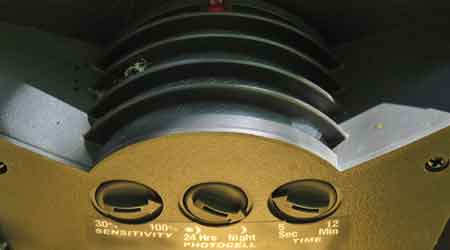


As a consequence, plants growing in forest understories receive less light of a much lower R to FR ratio (R:FR) than those growing in open spaces. Under a canopy, light intensity is decreased and its quality is changed as the overtopping green leaves strongly absorb blue and red light (R) but reflect far-red light (FR). Nearby vegetation can impact both light quantity and quality. Conditions in nature often involve simultaneous changes in multiple light cues leading to an interplay of various photoreceptors to adjust plant growth appropriately (Pierik & Testerink, 2014 Mazza & Ballare, 2015 de Wit et al, 2016 Ballare & Pierik, 2017 Fiorucci & Fankhauser, 2017). This acclimation relies on the plant’s ability to perceive many cues such as water, nutrients, temperature, or light. SynopsisĪcclimation of plants to adjust their development to the changing environment is of utmost importance. By this mechanism and that of the already-known of phytochrome A photoreceptor, plants might ensure to properly adapt and thrive in habitats with disparate light amounts. As a result, the PIF-HFR1 module is differently balanced, causing a reduced PIF activity and attenuating other PIF-mediated responses such as warm temperature-induced hypocotyl elongation (thermomorphogenesis) and dark-induced senescence. The enhanced HFR1 total activity is accompanied by an attenuated PHYTOCHROME INTERACTING FACTOR (PIF) activity in C. We showed that C. hirsuta HFR1 protein is more stable than its A. thaliana counterpart, likely due to its lower binding affinity to CONSTITUTIVE PHOTOMORPHOGENIC 1 (COP1), contributing to enhance its biological activity. Comparative analyses between the shade-avoider Arabidopsis thaliana and the shade-tolerant Cardamine hirsuta revealed a role for the atypical basic-helix-loop-helix LONG HYPOCOTYL IN FR 1 (HFR1) in maintaining the shade tolerance in C. hirsuta, inhibiting hypocotyl elongation in shade and constraining expression profile of shade-induced genes. Shade caused by the proximity of neighboring vegetation triggers a set of acclimation responses to either avoid or tolerate shade.

7 Present address: Department for Epidemiology and Pathogen Diagnostics, Julius Kühn-Institut, Federal Research Institute for Cultivated Plants, Braunschweig, Germany.6 Institute for Plant Molecular and Cellular Biology (IBMCP), CSIC-UPV, València, Spain.5 Institució Catalana de Recerca i Estudis Avançats (ICREA), Barcelona, Spain.4 Department of Comparative Development and Genetics, Max Planck Institute from Plant Breeding Research, Cologne, Germany.3 Institut Jean-Pierre Bourgin, INRA, AgroParisTech, CNRS, Université Paris-Saclay, Versailles, France.2 Structural Plant Biology Laboratory, Section of Biology, Department of Botany and Plant Biology, University of Geneva, Geneva, Switzerland.1 Centre for Research in Agricultural Genomics (CRAG), CSIC-IRTA-UAB-UB, Cerdanyola del Vallès, Campus UAB, Barcelona, Spain.


 0 kommentar(er)
0 kommentar(er)
